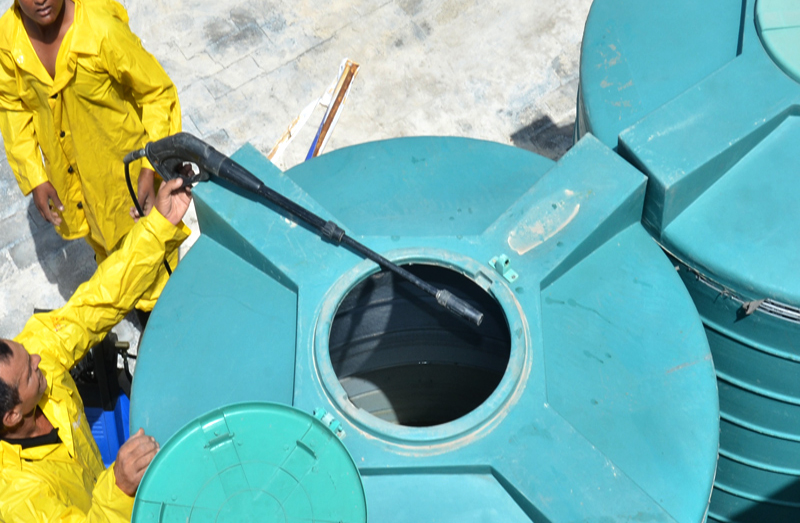
Why is water tank cleaning essential? It’s important to keep your home’s water clean and free of germs. Your tank may accumulate filth, dust, debris, and hazardous germs. Regular risk assessment-based cleaning will eliminate them, keeping the system clean, safe, and compliant.
How to clean a residential water tank
- Preparation
Water tank cleaning service in Mumbai follow the instructions below before cleaning:
- Ensure the personnel cleaning the water tanks is properly educated, certified, and equipped.
- Prepare technicians and Responsible Persons for the job, asset(s), and how to limit or manage risks indicated in the Risk Assessment before work.
- Notify all building users that cleaning work is about to begin (use signage to restrict or limit the use of showers/taps).
- Before starting repairs, take photos of the water tank.
- You must disconnect the tank intake to drain and check it.
- You should also disconnect booster pumps linked with the system/tank.
- Emptying the Tank
Preserve an empty tank before you start cleaning. Two technicians and strict adherence to restricted space safety laws and procedures are essential. - Tank cleaning
Scrape all inside surfaces and wet vacuum floors and walls. The best water tank cleaning service thane has remove any visible dirt and debris. It should be highlighted if there are any defects. - Refueling
Refill and flush the tank with fresh city water, checking for leaks. - Cleaning and disinfection
Take note of the water’s pH. Chlorinate the tank water to the required concentration of free residual chlorine in mg/liter (ppm). Calculate the tank capacity, concentration, contact duration, and dosage per m3 of water. Check the Sodium Hypochlorite using a chlorine test kit, and don’t add chemicals until the tank is half-full. If necessary, add more Sodium Hypochlorite and retest for 50PPM free residual chlorine. Add 0.5 liters of chlorine per m3 and mix in the tank. pH affects free chlorine concentration. Use it only in systems with a pH of less than 8.5 and adjust the contact duration as directed. You may open the tank’s outflow to enable chlorinated water to circulate the system.All outlets have chlorinated water that must be tested sequentially by opening taps and showers. You should try a comparable number of outlets along each leg if testing all taps/showers is not feasible.Ensure 50PPM for 60 minutes or 20PPM for 120 minutes. If you think the water tank will run empty while pushing water through the system, close the outlet valve and fill the tank halfway before adding another chemical dosage and finishing the fill. Allow water from the tank to flow to the calorifier for disinfection. - System recommissioning
If the disinfection is >5PPM, the chlorinated water must be neutralized using Sodium Thiosulphate (non-hazardous). Dose the tank with tepid water. Allow water to circulate throughout the system and test for chlorination using Starch/iodide sheets.Open the drain valve or use a pump to half-empty the tank. The ball valve is opened to enable new water to enter the tank. Ensure the ball valve shuts properly to avoid over-filling the tank.After flushing or partially draining the system, Measure the residual free chlorine concentration in the tank. It should be 0.5-0.1PPM. - Photograph the water before reapplying the tank cover.
Fill out a Disinfection Label for each tank, noting any down services. Sign and mark each tank, removing or covering the existing sticker.If You disinfected hot down services, start the calorifier and set the return water temperature to 50°C, or 55°C in a hospital environment.The calorifier flow should be at least 60°C. Label the calorifier with a service label for disinfection information. Ensure all equipment is removed and all tank and calorifier valves are open.
Final Words
These are all the things you need to know about domestic tank cleaning. Water tank cleaner in Navi Mumbai follow the above steps and can effectively clean your water tank and keep it free from germs. Be sure to clean your water tank for healthy living conditions regularly.